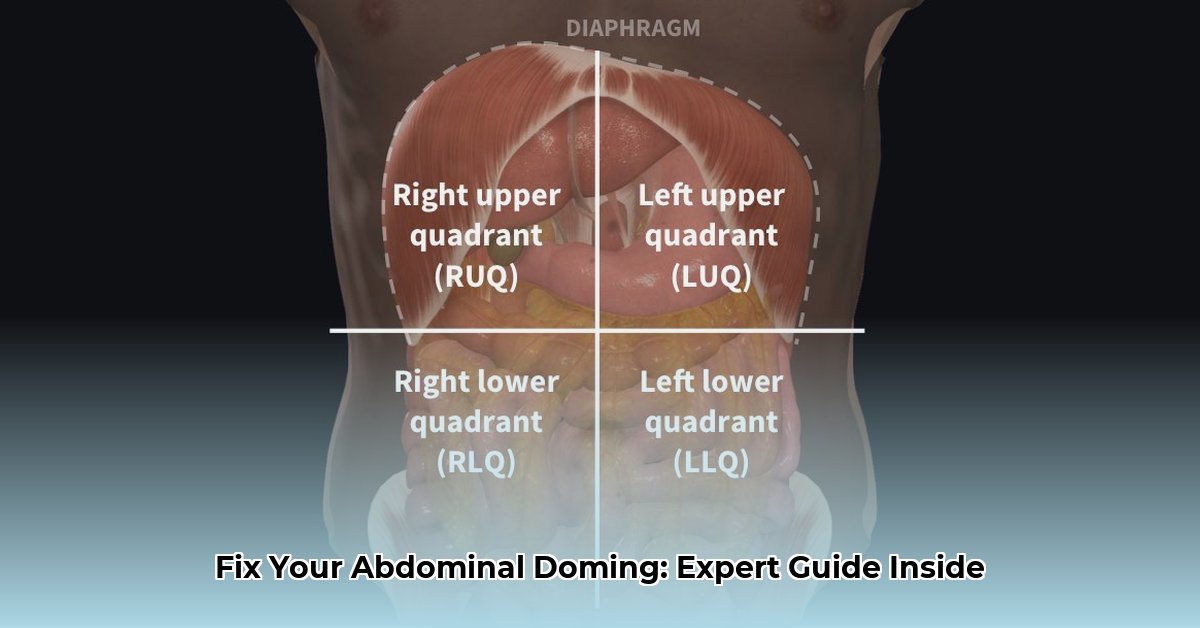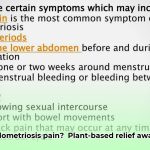That annoying bulge you get when you do crunches or planks? It might be abdominal doming, coning, or diastasis recti. These are surprisingly common problems, and it can be tricky to know exactly what’s going on and how to fix it. This guide will walk you through understanding these three conditions, showing you the differences and what you can do about them. We’ll cover simple self-assessments, safe and effective exercises to strengthen your core (especially that crucial TVA muscle!), and when you should see a professional for help. Let’s get you back to feeling strong and confident in your core!
Abdominal Doming: Understanding Core Instability and Solutions
Let’s talk about that annoying bulge you might see in your belly – abdominal doming. It’s not always a big deal, but it often means your body’s trying to compensate for something; maybe you’re not using your core muscles correctly during exercise, indicating potential core instability. Think of it as a warning sign, urging you to make some adjustments. It’s different from coning (where your belly button dips inward) and diastasis recti (a separation of your abdominal muscles). Knowing the difference is essential for fixing the problem.
How To Assess Abdominal Bulging and Core Muscle Separation
Do you notice a significant outward push in your tummy when you do exercises like planks or sit-ups? Does it come with back pain or discomfort in your pelvis? A simple self-check can help you pinpoint the issue. Try these:
-
Belly Button Check: Lie flat on your back with your knees bent, feet flat on the floor. Gently press your fingers just above and below your belly button. Feel a noticeable gap wider than one or two fingers? You might have diastasis recti, a separation of your abdominal muscles. This needs a more thorough evaluation by a professional.
-
Exercise Observation: Try a plank or crunch, watching your abdomen carefully in a mirror. Does it bulge significantly outward (abdominal doming)? Or does your belly button sink inward (coning)? Does it feel strained or painful?
This quick check helps narrow things down, but remember, a proper diagnosis from a healthcare professional – like a physical therapist or doctor – is key to effective treatment. They can accurately determine what’s happening and recommend the best approach.
Effective Strategies for Core Strengthening and Flattening Your Stomach
Improving your core strength is essential for fixing abdominal doming. This means strengthening the deep core muscles and learning to use them correctly. These methods work best together:
1. Breathing Right: Mastering deep belly breathing is critical.
- Inhale: Breathe deeply into your belly, feeling it expand fully. Place your hands on your stomach to feel the rise and fall.
- Exhale: Gently tighten your core muscles, pulling your belly button slightly towards your spine. Hold this gentle tightening as you breathe out. Imagine you’re hugging your baby or zipping up tight pants.
This is called diaphragmatic breathing, and it helps activate your deep core muscles. Many people breathe only using their chest and shoulders instead of their diaphragm, which is located beneath your lungs.
2. Targeting Your Deep Core Muscles (TVA): The transverse abdominis (TVA) is the deep muscle that wraps around your waist like a corset. Focusing on this muscle is key:
-
Belly Breathing with TVA Engagement: Lie on your back, knees bent, feet flat on the floor. Inhale deeply into your belly, feeling it expand. As you exhale slowly, draw your belly button inward toward your spine, feeling the engagement in your deep core. Place your fingers on your hip bones, one inch in and one inch down; you should feel a slight tightening. Keep your breathing steady and focus on that deep core activation. Repeat this 10-15 times.
-
Hollow Body Hold: Lie on your back, arms extended overhead, legs straight. Inhale, then exhale completely, pressing your lower back firmly into the floor. Imagine you’re trying to make your waist as small as possible and maintain contact with the floor. Only lift your legs if you can maintain contact of your lower back with the floor. Hold this for 10-15 seconds, aiming for a slow, controlled exhale. This activates your TVA effectively.
3. Modifying Your Workouts: Adjust challenging exercises to protect your core.
-
Plank Modifications: Instead of a full plank, start with a forearm plank, ensuring your back remains straight without doming. Focus on engaging your core muscles, not just holding the position. If you feel doming, widen your stance or try planking against a wall.
-
Crunch Alternatives: Instead of traditional crunches (which can worsen doming), try bird-dog exercises or dead bugs. These involve extending one arm and the opposite leg while maintaining a flat back. This improves core control while reducing pressure on your abdominal wall. Pay attention to your breathing.
Remember, consistency is key! Start slow, focusing on proper form rather than speed or repetitions. Listen to your body—if something feels wrong, stop and adjust your technique.
When to Seek Professional Guidance for Abdominal Issues
If your abdominal doming persists even after consistently following these strategies for six to eight weeks, it’s probably a good idea to consult a physical therapist specializing in pelvic floor health or a certified personal trainer with experience in diastasis recti and core dysfunction. They can give you a thorough checkup, correctly identify the issue (abdominal doming, diastasis recti, or coning), and create a personalized plan just for you. Definitely seek professional help if the doming is accompanied by persistent pain, urinary incontinence, pelvic pain, or if it’s limiting your daily activities. A physical therapist can also teach you how to properly engage your transverse abdominis (TVA) and other core muscles to minimize doming during exercise and daily activities.
Core Health for Long Term Wellness
Preventing future problems involves ongoing core strengthening. Incorporate a well-rounded exercise routine focused on proper form and engaging all your core muscles. Include exercises that target all layers of your abdominal muscles, including the transverse abdominis, obliques, and rectus abdominis. Maintain a healthy weight and practice good posture. Remember, prevention is much easier than correction!
Exercise Safety: A Quick Risk Assessment Guide
This table gives you a general idea of the risks of certain exercises if you’re experiencing abdominal doming. Remember, it’s always best to speak with a healthcare professional for specific advice.
| Exercise | Risk of Worsening Doming | Benefits | Precautions |
|---|---|---|---|
| Traditional Crunches | High | Rectus abdominis strength (potentially) | Avoid these; choose TVA-focused exercises instead. |
| Planks | Moderate | Overall core strength | Modify; maintain a neutral spine and proper form. Exhale before engaging. |
| TVA Exercises | Low | TVA activation | Proper technique is extremely important. |
| Bird-Dog Exercises | Low | Core stabilization, improved posture | Focus on slow controlled movements and proper form. |
| Deadlifts | Moderate to High | Full body strength | Proper form is absolutely crucial; if unsure seek advice |
| Leg Lifts | Moderate | Abdominal strength | Keep lower back pressed to the floor; exhale on the lift |
This information is a starting point. Fixing abdominal doming takes time and dedication. Remember, consistency and correct form are key to successful results. Your body will thank you for it!
How to Differentiate Diastasis Recti, Doming, and Coning for Effective Treatment
Key Takeaways:
- Diastasis recti, doming, and coning are related but distinct abdominal issues causing core weakness.
- Understanding their differences is crucial for effective exercise modification.
- Proper breathing and core engagement are key to managing these conditions.
- Seek professional guidance if you suspect you have diastasis recti or significant doming/coning.
Clarifying Diastasis Recti, Doming, and Coning Conditions
Let’s clarify these often-confused terms. Diastasis recti is the separation of the rectus abdominis muscles (your “six-pack” muscles) along the linea alba, the connective tissue running down your midline. Doming is a visible outward bulge in the abdomen, often during core exercises. Coning is a more severe form of doming where the linea alba itself bulges outwards, creating a cone shape. Think of it as a more extreme abdominal protrusion. How to differentiate diastasis recti doming and coning requires careful observation and, potentially, professional assessment.
Self-Assessment: Recognizing Core Dysfunction
Before jumping into exercises, it’s essential to check for these issues. Lie on your back, knees bent, feet flat. Gently place your fingers on your abdomen, midway between your belly button and ribcage. Now, gently lift your head and shoulders slightly off the floor, as if starting a crunch. Do you feel a separation between your abdominal muscles? Feel a bulging outward? That could indicate diastasis recti or doming. If the separation is significant (more than 2 finger widths) and accompanied by a pointed “cone” shape, it might be coning. Remember, visual assessment is crucial, and professional guidance is often needed for accurate diagnosis.
Effective Management Strategies: Exercises and Techniques for Core Stability
Many exercises can benefit your core, but always prioritize safety. Start with gentle movements. Incorrect form can worsen existing
- Plant Based Diet Breast Cancer: Research-Based Benefits - December 16, 2025
- Plant-Based Diet Ulcerative Colitis Remission: Proven Benefits - December 15, 2025
- Plant-Based Diet and Fibroids: Reduce Symptoms Now - December 13, 2025










